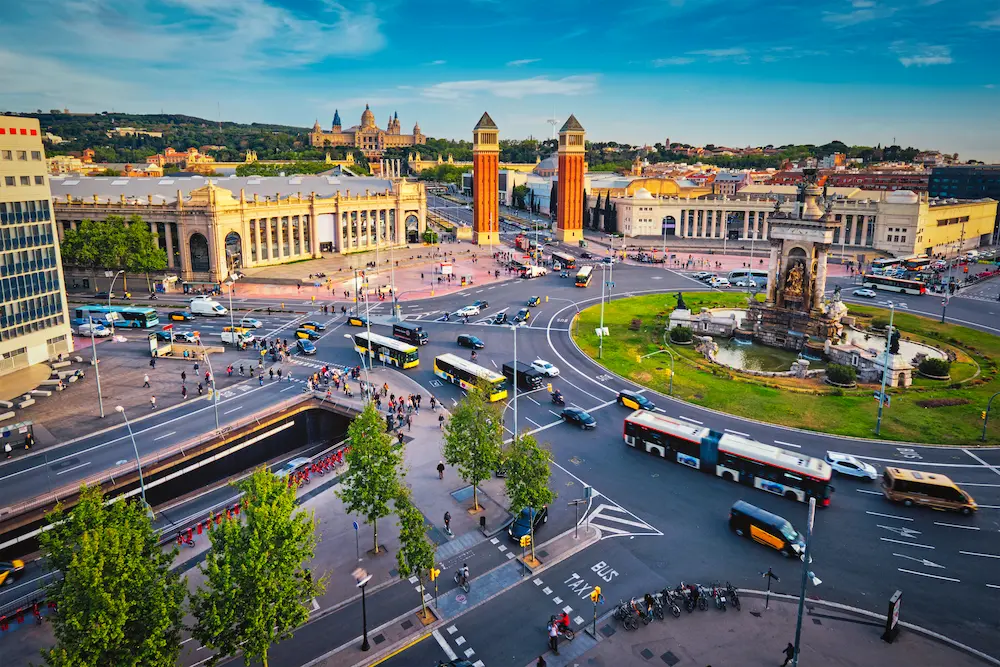The atmosphere that Barcelona in autumn breathes makes us wonder what secrets the walls of its streets hide. Since its foundation, this city has been the scene of pagan ceremonies, witchcraft, crimes and some miracles that have created myths and stories that have prevailed over time thanks to word of mouth. Whether they are reality or horror stories for children, in some cases it depends on the listener’s act of faith, although it is true that there are many proven events that would make anyone’s hair stand on edge. Discover 10 mysteries of Barcelona and dare to visit some of the locations that witnessed the most incredible of tales.
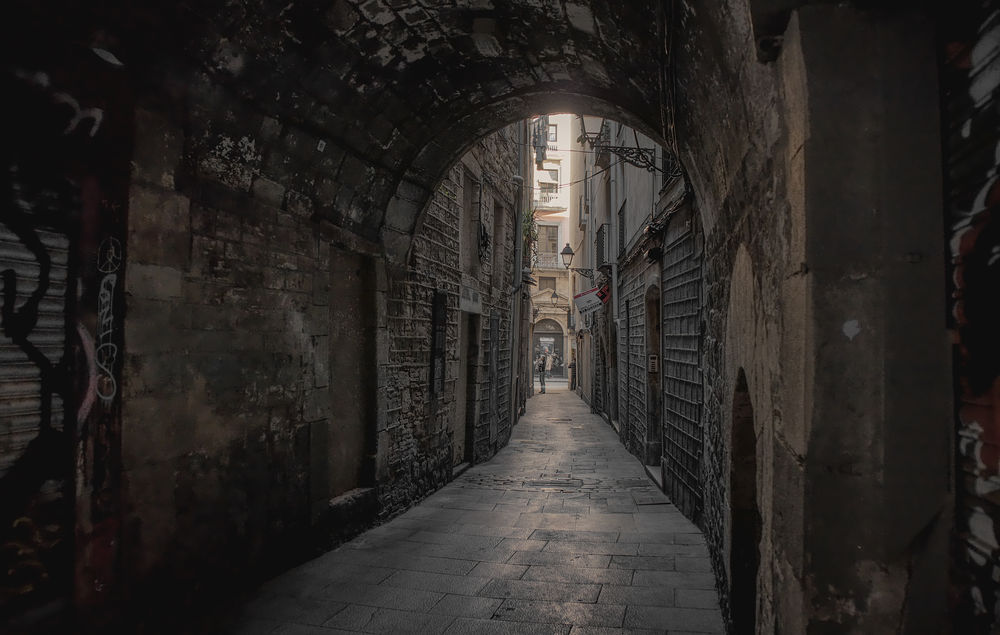
THE MOST POPULAR MYSTERIES OF BARCELONA
You may have heard certain facts about them or know their stories by heart, but, whatever the case, there is no doubt that these three mysteries are the most popular and known among the inhabitants of Barcelona, making them a must if you are on holiday in our apartments in Barcelona.
Raval’s vampire
Enriqueta Martí, one of the darkest characters in the history of Barcelona, became a legend during the early 20th century. Let’s travel back to 1912, right in the heart of Joaquim Costa Street. In the formerly known as Ponent Street, a neighbor sticks her head out the window. Between the curtains of the neighboring house, she sees a girl with a shaved head in Enriqueta’s living room and decides to warn an acquaintance, who tells the authorities about what the woman has seen. Once they arrived, three policemen found two children —Teresita Guitart, who had disappeared some days ago, and Angelita— there. At that time, the media assured that they had found ointments made with fluids of children and human bones in the houses where the ‘female vampire’ lived. It was said that Enriqueta used to beg during daylight while, at night, she kidnapped children to create potions that she sold to the city’s elite. Although the story that has been proven rejects the fact that Enriqueta was a murderer, it was proven that she was condemned as a pimp and kidnapper.
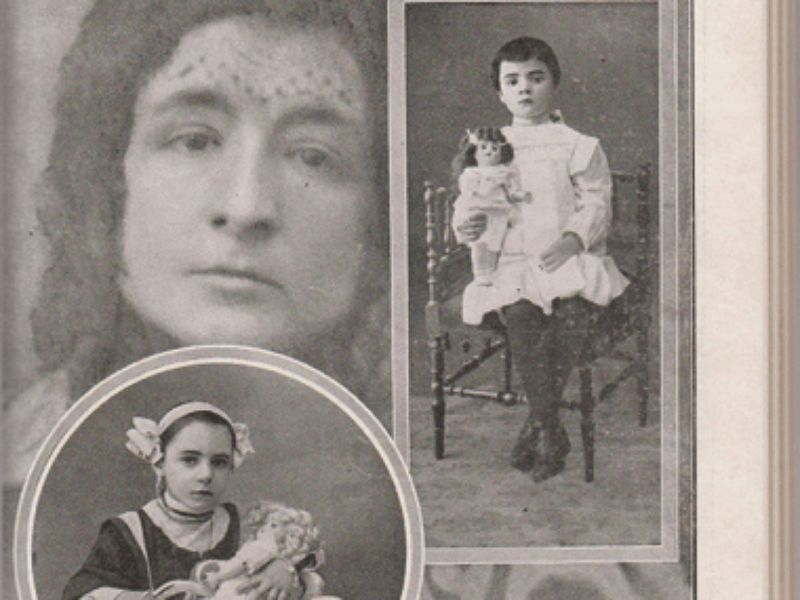
The curse of the Liceu theatre
If you have ever visited the Liceu you will know that the building has been burnt down twice in its history: once in 1861 and again in 1994. In the plot where the most famous theater of the city now stands, there was formerly a Trinitarian convent, where they lived peacefully for two centuries until the arrival of the Napoleonic troops who seized it. Once it was recovered by the monks a few years later, the convent burned in one of the bullangas of the nineteenth century (riots of a liberal nature). Expelled from the enclosure due to the fire, it is said that they cursed the building where the Gran Teatre del Liceu was built in 1844, since they considered it unacceptable for activities of such pagan nature to occur in this formerly sacred land. In any case, the theater was burned a few years later, during the Carnival of 1861, almost destroying the building down to the ground. The curse continued with the Liceu bomb, an attack perpetrated by an anarchist in 1893 and in which 20 people died. In 1994 the Liceu burned for the last time, when a spark started a fire on the stage curtain, causing the theater to burn to its foundations. Built again and reopened in 1999, how long will it take for the theater to fall once more due to Barcelona’s best-known curse?
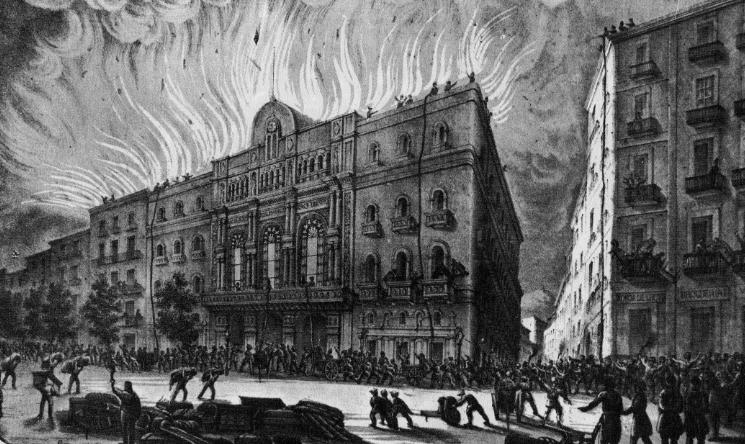
Santa María del Mar’s revenant
Legend has it that the ‘church of the people’ witnessed a chilling story. Shortly after her marriage to a Barcelona youth, a young woman dies several centuries ago, so the family decides to dress her with the wedding dress, including jewelry and beads. Mourned in Santa Maria del Mar, once night falls, two thieves sneak into the church to steal the dead woman’s jewels. While trying to take off the earrings that she was wearing, they pulled at her ears to take them off. At that moment, the corpse bride cried out in pain, chasing away the intruders. The bride slowly walked home, where she found her family who, obviously, was in shock. It was the supposed widower who realized that the presence before him was really his wife in flesh and bones. The doctor who attended her after this incident found that she had just suffered an episode of catalepsy and had mistakenly been passed as dead, completely denying that she was a revenant. Despite the scientific explanation, the neighbors avoided the woman for the rest of her life, because, having lost the lobes of both ears, they could easily recognize her in the street.
MYSTERIES OF THE GOTHIC QUARTER
It is logical to think that the place where most legends hide may also be one of the oldest in the city. Out of these 10 mysteries of Barcelona, we have selected only the most relevant in the area, since the Gothic Quarter is full of secrets.
The devil of Santa María del Pi
They say that the tower of one of the most famous medieval buildings in Barcelona, Santa Maria del Pi, was built by three different architects. The reason is that, during the Middle Ages, it was believed that towers were erected with the help of the devil, with whom they had to make a pact when the constructors reached the 100th staircase if they wanted to finish their work. When the architect left the construction on stair number 99, it was another who finished the tower. Feeling cheated, the devil left the mark of one of his hooves on the 100th stair. The parishioners who came to the church to see the footprint were so many that the priest finally decided to remove the mark from the staircase.
In addition, a plaque on the wall of the church recalls how the master builder José Mestres fell from one of the church’s bridges without a railing and landed in the square without a bruise, which in 1800 was attributed to the miraculous action of San José Oriol, who is buried there.
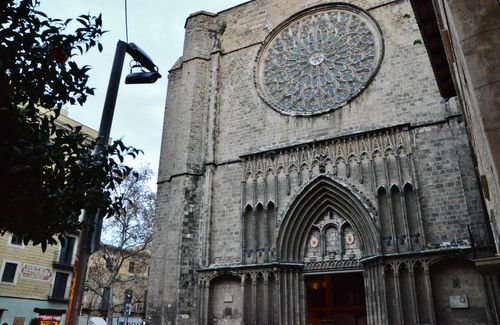
The Alchemist’s house
They say that at the time when the Jews inhabited the Call, at number 8 of Arc de Sant Ramon del Call lived an alchemist. One day, a young Christian came to visit him, as he used to be in love with a Jewish girl, although he was currently deeply hurt. The reason was that the girl had left him when he confessed that he did not approve of the union between two people of different religions. Thus, the young boy asked the alchemist for a poison to kill his ex-lover. The Jew asked him if the person he wanted to poison was male or female, and after the boy’s response, he gave him a poisoned flower to give to the girl. The surprise came when the Alchemist returned to his house, where he found his daughter dead with the flower he had given the boy in her hand. Distraught, the father fled from the house putting a curse on it, which condemned the building to always remain uninhabited and bring the worst misfortunes to whoever entered it. Today, some claim to have heard the Jewish girl’s weeping from the walls of number 8.
The skull of Pont del Bisbe and the mailbox of the Adriaca house
If you have walked along carrer del Bisbe, you have surely marveled at its neo-Gothic (not Gothic) bridge. Exactly, the bridge was built as part of a plan to reform the area of the Gothic quarter at the beginning of the 20th century and due to the Universal Exhibition. The project launched by Joan Rubió i Bellver was not accepted by many Barcelona architects. Therefore, if you look up when you go under the bridge, you can see a skull with a dagger crossing it. Although the real reasons why Rubió carved it there are still a mystery, everything points to the architect’s anger at not being able to finish the project, since he considered that his idea had been murdered. However, there are several legends, such as the one that says that when the dagger separates from the skull, Barcelona will collapse, or that it will bring bad luck to those who observe it while crossing the bridge. It is said that those who believe in this last prophecy should go to the Ardiaca house, a construction that has a curious mailbox designed by Lluís Domènech i Montaner. Thus, in 1895, the headquarters of the Lawyers’ Association was installed in the building, so the architect created a mailbox that honored the profession: some swallows to represent speed as an ideal of justice, an ivy branch that explains how bureaucracy grows everywhere, and a turtle, which symbolizes the slowness of judicial processes. The latter is, according to the legend, the one that will bring back the good luck that the skull has taken from you, when you rub its shell.
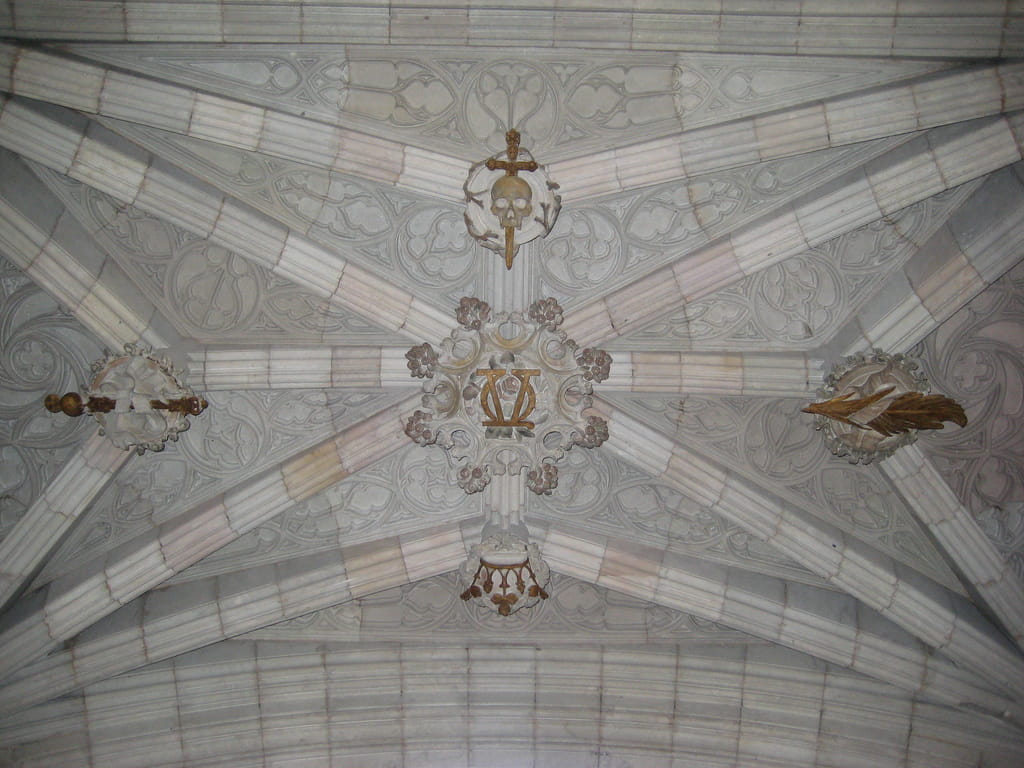
The dark history of Sant Felip Neri Square
The quiet and atmospheric square has been the scene of the most rugged and dark mysteries of Barcelona. In the Middle Ages, the square did not boast the beautiful appearance it presents today, but was a common grave used to bury the corpses of people who had been condemned to death by the Inquisition. It is said that some executioners were buried there, since no one wanted to be buried by their side. Another mystery that has prevailed is the gaps in the walls of the church. For many years, the story that these were the result of the executions of the cleric by the anarchists in the Spanish Civil War was explained. However, it has been proven that the holes were formed due to the shrapnel from the bombs thrown by the Italian Legionary aviation in an attack that took place in Barcelona, 1938. In this bombing, 42 people died, most of them children, as they took refuge from the bombs in a basement that did not withstand the attacks.
SECRET SPOTS OF BARCELONA
Let’s continue with our secrets and mysteries of Barcelona talking about legends and places that you might not have known about in Barcelona until now. They do not appear in most tourist guides, and the history they hide will undoubtedly surprise you.
The Viceroy’s bride and her palace
Maria Francesca Fiveller de Clasquerí i de Bru, was a cultured woman whose family had locked her up in a convent in la Garrotxa. While there, she got engaged to Antoni Amat, nephew of the viceroy of Peru. After the young man abandoned her before the wedding, the 75-year-old viceroy returned from the Americas and it was he who asked her hand in marriage. The viceroy, who liked to brag even though he had lost his position, built the palace that is still in the middle of the Ramblas. Three years after the arranged marriage, the viceroy died, and it was Francesca who was appointed to manage the palace and thus, gave it her name, Palau de la Virreina (Vice-Queen Palace). However, this did not last long, since she died of a seizure when she was in the middle of mass not long after. Barcelona mystery lovers say that in the current Center of Image you can still see her wandering around the palace like a lost soul
Ghost metro stations
You will not be able to visit these secret places of Barcelona without prior authorization, but under Barcelona’s tarmac there are numerous abandoned metro stations, fruit of the changes that this almost centennial public transport has suffered over time. Although there are about 10 of them, four are well documented: Gaudí, between Sant Pau and Sagrada Família; Correos, next to the prominent post office building and which maintains some advertising posters of the time; Ferran, between Liceu i Drassanes, and Banc. Legend has it that the latter was used to transport money to the Bank of Spain, which is located a few meters from the surface, through a network of tunnels, although it has never been proven. Moreover, did you know that the Correos stop has been a location for movies filmed in Barcelona?
Barcelona’s underground hides other stories, such as the one at the unused Vilanova Bifurcació railway stop (next to Marina metro stop), where a community of homeless people lived for a long time in its dark corridors, until there was a fire in 2016. On the other hand, in the place that is currently occupied by the entrance of the Catalan Railways in Plaça de Catalunya, at the beginning of the 40s, the Avenida de la Luz was projected, which was the first underground shopping center in Europe. This consisted of sumptuous shops and a cinema, of which there are still some parts that can only be visited with explicit permission. From this avenue that fell into decline in the 80s, some of its impressive columns still remain in the lower part of the Sephora store in El Triangle.
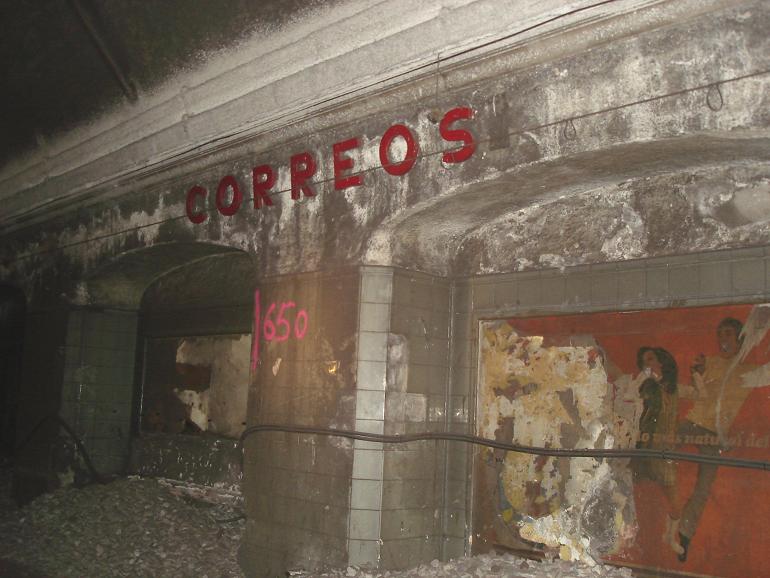
In the outskirts of Barcelona: L’Arrabassada casino & Torre Salvana
If you want to move from Barcelona city to visit two ghostly spots, the following are both unmissable places. The first, the Arrabassada casino, was a pharaonic estate that housed a hotel and casino, created with all the luxuries of the world and designed for the enjoyment of the upper class. It is said that the hotel had a suicide room, prepared for those who wanted to take their own lives after having lost all their savings. Today, only ruins remain, which give the place a mysterious vibe.
Another key point that closes this list of mysteries of Barcelona is Torre Salvana, one of those secret places that some know for presences from the beyond that people say they have encountered. This castle that dates from the tenth century is now in a ruinous state, and it is rumored that whoever visits it will see a desperate, old woman asking for help, or two girls dressed in pink and blue walking calmly in the area.
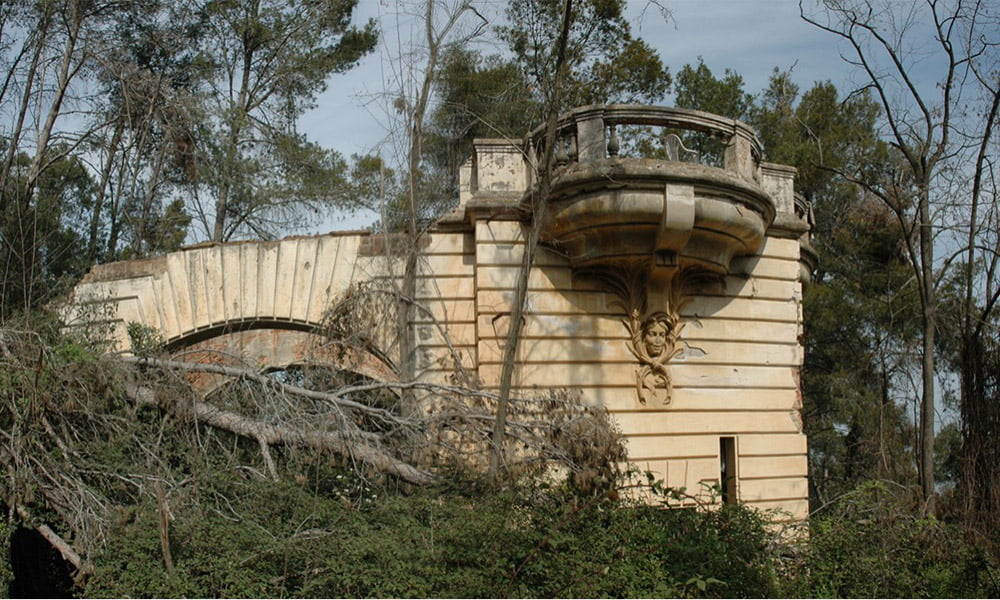
Let us know about other mysteries of Barcelona or legends that you have been told about the capital of Catalonia. In addition, fans of the occult should pay a visit to the monastery of Montserrat and discover all the secrets that these wonderful mountains keep.



